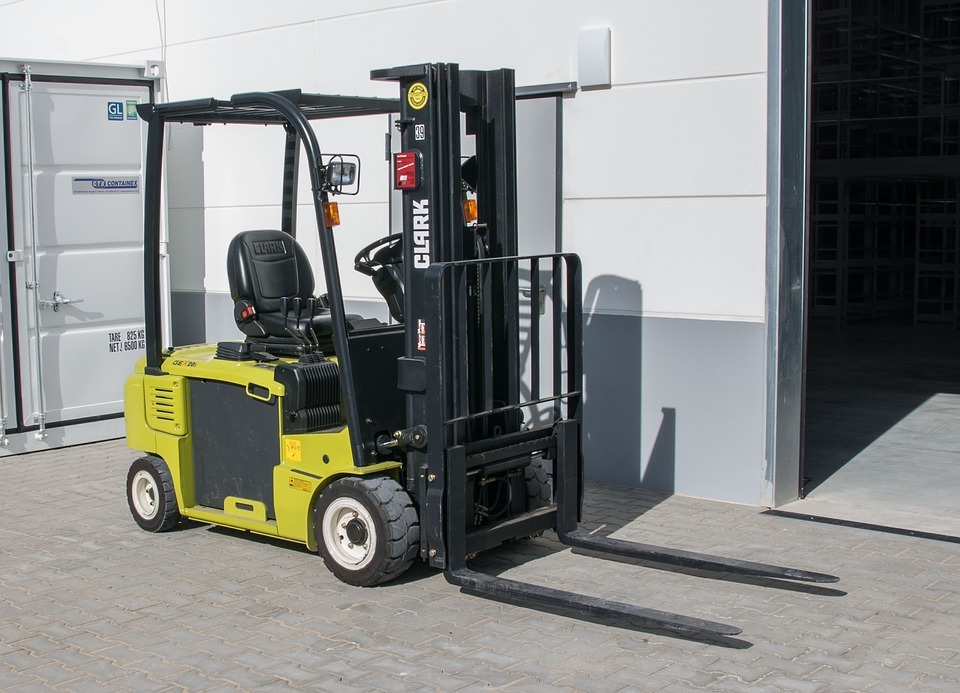Forklifts are a valuable piece of equipment used to handle and transport heavy loads. They are common across industries ranging from warehouse, construction, shipping, military, and agriculture.
Also called powered industrial trucks, forklifts, driven by untrained operators cause almost 33,000 fatal workplace injuries a year. Hence, safety regarding the operation of forklifts is extremely crucial.
To ensure safety retention and workplace efficiency, employers must allow only drivers who meet OSHA forklift requirements, or in other words, OSHA trained. Occupational Safety and Health Administration (OSHA) certification is the foundation that prepares operators for the job requirements.
1. What Your Forklift Training Covers
OSHA requirements describe that any person operating a forklift must possess proper training and education. Besides, they should have the necessary experience in handling powered industrial trucks.
Forklift training covers the job site requirements, potential hazards, and recommended safety practices. Some common risks include forklift overturns, getting crushed by heavy loads, injuries from moving parts of the forklift, etc.
If enrolled in a training program, one will learn all aspects of forklift safety, such as avoiding the leading causes of fatal forklift injuries. Furthermore, the training will equip you with knowledge of loading, unloading, and making deliveries.
2. Getting Forklift Certified
Before signing up for a forklift course, the first thing to do is decide which type of truck to drive. Your training curriculum varies depending on the forklift type. After making a decision, register for the forklift training.
Depending on when you got your certification, your employer may need you to undergo a refresher course. Moreover, this situation is applicable when you get promoted to operate a higher-class, powered industrial vehicle.
Another good thing is that instead of waiting for your employer to provide training, you can look for local technical training courses on your own. These days, online programs are available with an emphasis on practical demonstrations.
You will attempt a written test, and trainers will supervise you at the job site. By working closely with you, the trainers make sure that you satisfy the checklist of tasks to accomplish.
You will receive an operator card on passing, and your certificate is valid for three years. It will give you an advantage in applying for a job anywhere in the U.S.
3. Job Opportunities
When you have a forklift certification, you will be OSHA compliant and will be able to find employment in a variety of sectors. Based on your work environment, you may carry titles like a delivery driver, forklift operator, warehouse associate, heavy equipment loader, or transportation employee.
Common job-specific tasks are:
- Manual loading and unloading
- Driving the forklift
- Cargo security
- Vehicle maintenance
- Strict adherence to safety regulations
You should be over 18 and have a GED or high school diploma to get your certification. OSHA doesn’t directly provide a certification course, but you can get it independently.
Most of the time, employers take the responsibility of providing you with proper on-the-job training. They may also get you enrolled in a certification course to ensure that you comply with OSHA forklift requirements.
4. Five Elements of OSHA Forklift Safety Guidelines
Before joining an OSHA forklift training course, here are the five primary things you should know:
a) Vehicle Knowledge
There are many types of forklifts, such as open structures, rough-terrain lift trucks, tipping-prone, etc. Understanding the machinery in use can improve workplace safety for operators, employees, and other bystanders. To prevent possible serious injury, maintain eye contact with other employees on the site, wear a seatbelt, and follow other forklift rules.
b) Regular Checkups
You must inspect the forklifts before starting the engine to ensure good working conditions. This means monitoring checkpoints, such as tires, brakes, backup alarms, and seat belts. This way, the operator can find possible solutions for the issues detected and stay OSHA-complaint.
c) Load Basics
Before picking heavy loads with forks, operators must ensure load stability for safe transport. OSHA advises lifting the forklift before lifting the load and clearing the lower stack by about four inches. You must be positioned squarely on a flat operating surface in front of the load placement destination. Place light loads over heavy ones and make sure it is centered.
d) Safe Speeds
OSHA doesn’t specify any speed limit for the safety of forklift operations. However, each facility may have its own speed requirements for powered industrial trucks on the site. Factors like loads being carried, pedestrian traffic, and adequate stopping distances play a role in deciding a maximum safe-speed.
e) Combined Center of Gravity
Since forklifts are massive machinery, when you place the load, the whole equipment has a combined center of gravity. It forms a stability triangle, which you should be aware of while taking turns or coming to a halt. Heavy or improper loads, rough terrain, and inaccurate forklift operation can disturb this stability.
Drivers armed with forklift certification reinforce safety at the workplace. This starts with proper training.
